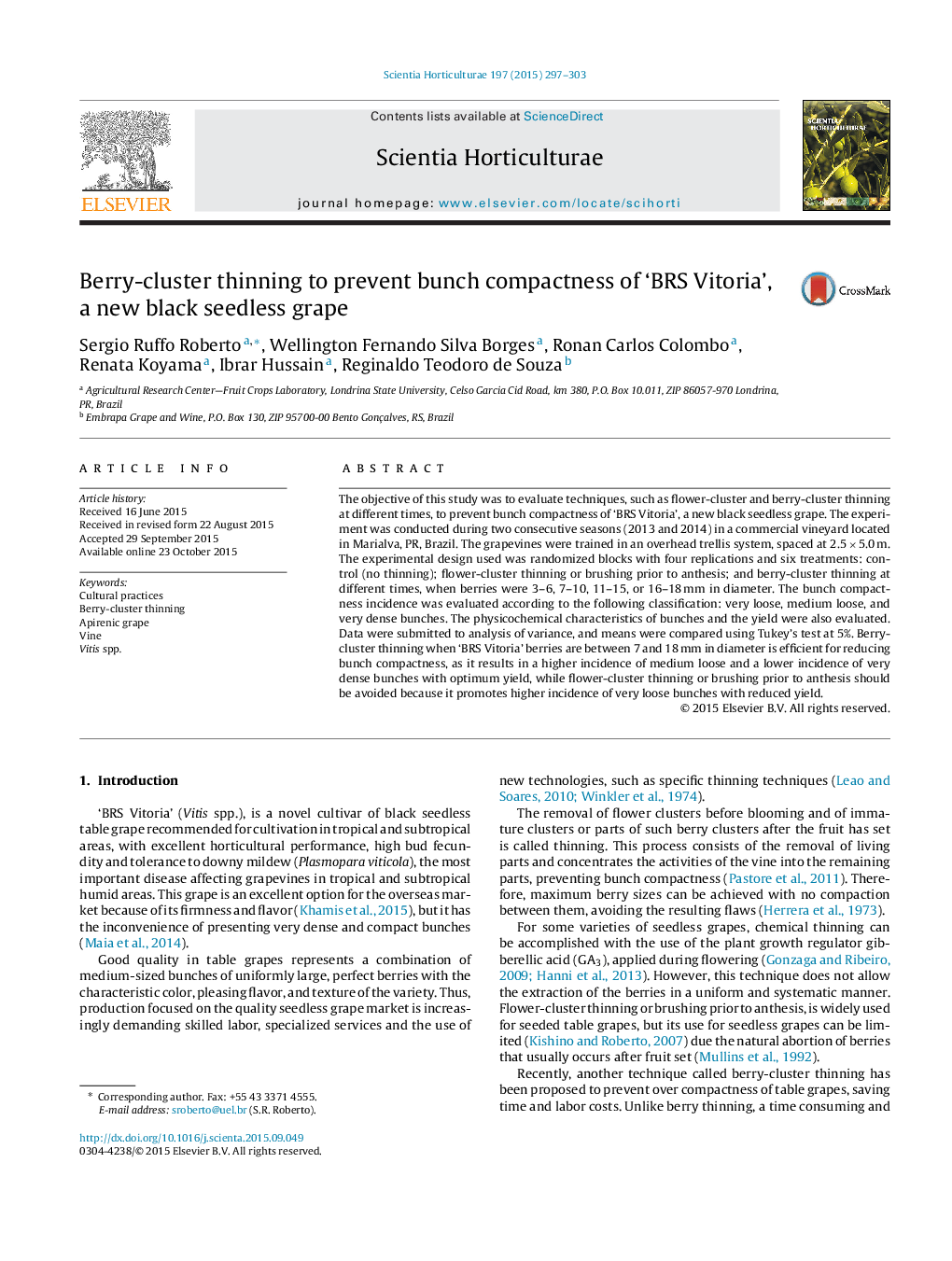| Article ID | Journal | Published Year | Pages | File Type |
|---|---|---|---|---|
| 6406760 | Scientia Horticulturae | 2015 | 7 Pages |
â¢Techniques to prevent bunch compactness of 'BRS Vitoria', a new seedless table tolerant of downy mildew, were investigated.â¢The experiments were carried out in two consecutive crop seasons.â¢Berry-clusters thinning provided the best results to prevent bunch compactness with optimum yield.â¢Flower-cluster thinning or brushing should be avoided by resulting in reduced yield.
The objective of this study was to evaluate techniques, such as flower-cluster and berry-cluster thinning at different times, to prevent bunch compactness of 'BRS Vitoria', a new black seedless grape. The experiment was conducted during two consecutive seasons (2013 and 2014) in a commercial vineyard located in Marialva, PR, Brazil. The grapevines were trained in an overhead trellis system, spaced at 2.5Â ÃÂ 5.0Â m. The experimental design used was randomized blocks with four replications and six treatments: control (no thinning); flower-cluster thinning or brushing prior to anthesis; and berry-cluster thinning at different times, when berries were 3-6, 7-10, 11-15, or 16-18Â mm in diameter. The bunch compactness incidence was evaluated according to the following classification: very loose, medium loose, and very dense bunches. The physicochemical characteristics of bunches and the yield were also evaluated. Data were submitted to analysis of variance, and means were compared using Tukey's test at 5%. Berry-cluster thinning when 'BRS Vitoria' berries are between 7 and 18Â mm in diameter is efficient for reducing bunch compactness, as it results in a higher incidence of medium loose and a lower incidence of very dense bunches with optimum yield, while flower-cluster thinning or brushing prior to anthesis should be avoided because it promotes higher incidence of very loose bunches with reduced yield.
